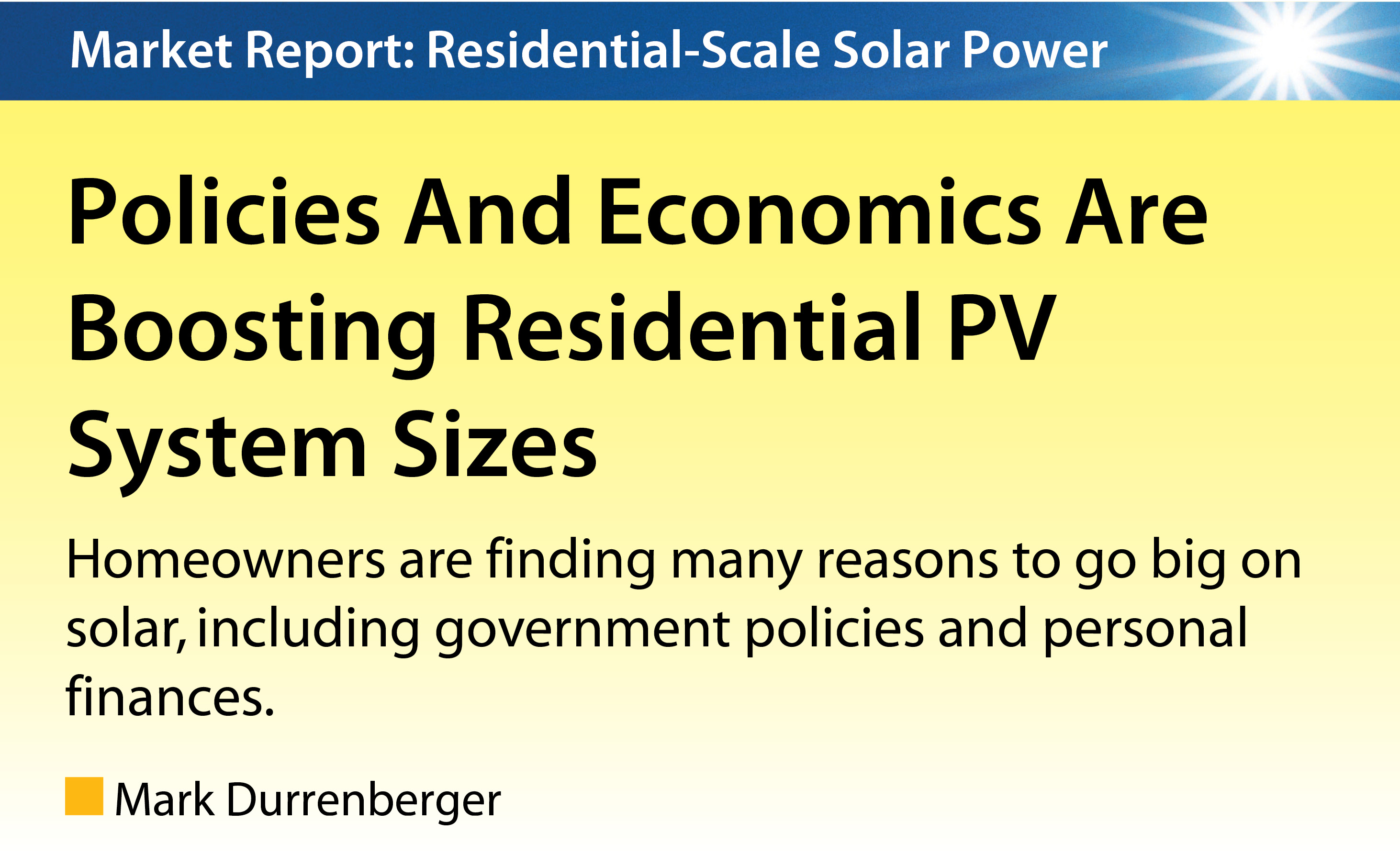

301 Moved Permanently
In 2012, the average size of residential photovoltaic systems installed by New England Clean Energy was 6.15 kW. In October and November of 2013, we installed seven 10 kW systems and a 45.9 kW pole-mounted array - the largest residential solar PV system in central Massachusetts. That burst of larger systems piqued our curiosity. Anecdotally, it seemed clear residential system size was inching up yearly, but what would the data say?
Analysis of our 300-plus installations over the past seven years confirmed that increasing system size is a bona fide trend. Since we opened our doors, the size of residential solar systems in Massachusetts has increased, on average, 30% a year. As of October 2013, our average system size was 7.8 kW, up 1.65 kW from 2012.
Why the increasing system size, especially in a state where the utility-funded, state-sponsored rebate tops out at 5 kW systems? Input from our customers confirmed a variety of motivations, shaped mostly by government policies but also by personal financial and environmental goals. From this input, we have identified some key reasons why the size of residential home PV systems is trending up. While some of these reasons can be put down to state policies, most are applicable in many parts of the country.
Reason 1 - Incentives in place
The Massachusetts solar rebate delivers $2,000 to $4,250 to homeowners based on the first 5 kW of systems up to 15 kW. For a few years, that cap was a factor in many homeowners purchasing systems of about 5 kW or less. More recently, though, people are less focused on the state rebate and more on the 30% federal tax credit, which is based on total system cost and has no limit. In fact, in a New England Clean Energy customer survey in 2012, 70% of respondents cited the federal tax credit as a motivator in going solar.
People have realized the benefits of the federal credit far outweigh the state rebate. In short, the bigger the system, the bigger the tax credit. In that context, the state rebate becomes much less significant.
Also, there is no limit to the number of solar renewable energy certificates (SRECs) solar owners can sell in the successful Massachusetts market. The more electricity generated, the greater the SREC income. That income is the main contributor to fast payback periods on solar.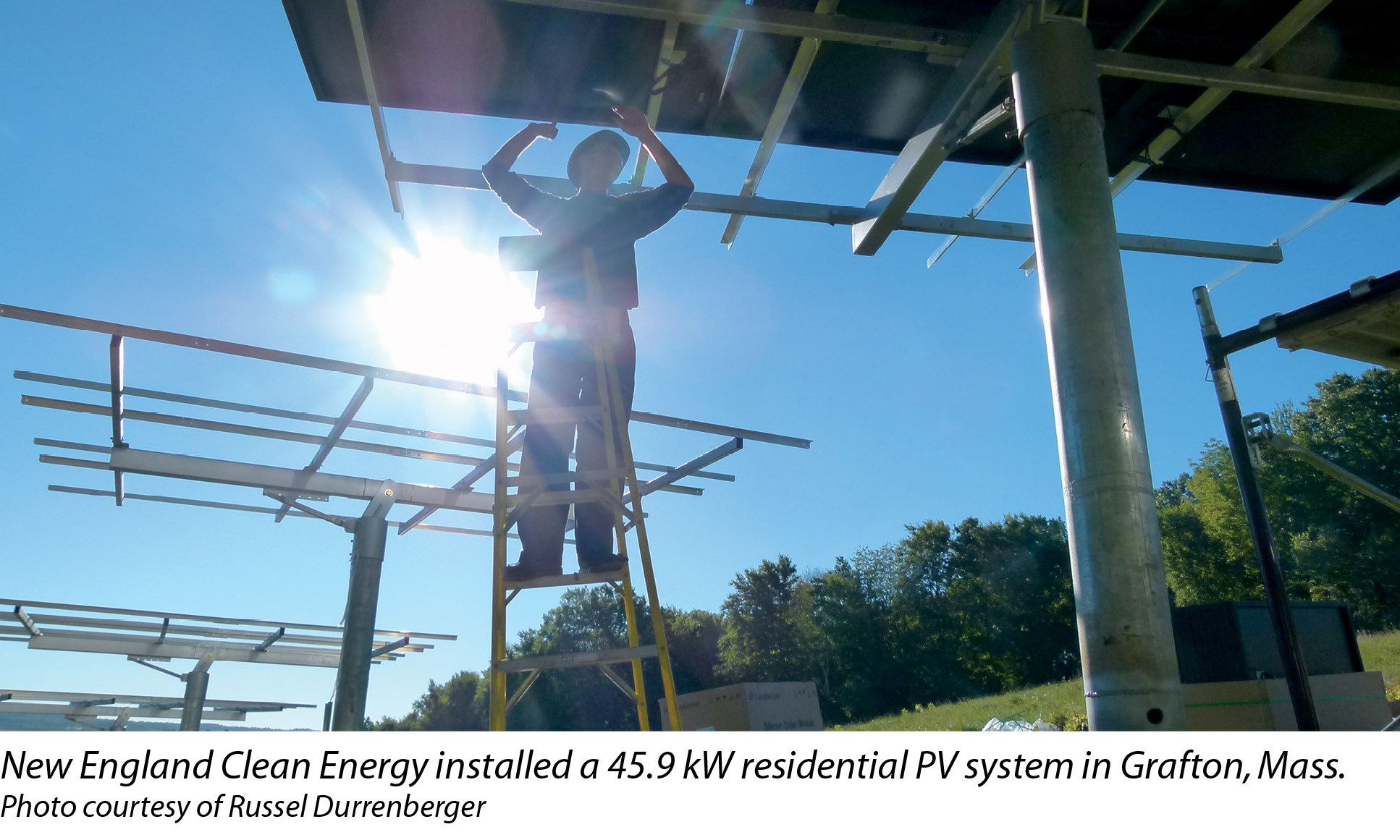
Reason 2 - Obstacles removed
Earlier this year, the major investor-owned utilities in Massachusetts lowered one obstacle to larger systems. Previously, systems 10 kW and larger required an electrical professional engineer stamp, which came with a $1,500 price tag and a three-month delay in the process - a definite deterrent to people who expected solar to be quick, cost-effective and easy. When the threshold was increased to 15 kW, it opened another door to larger system sizes.
Reason 3 - Neighborhood net metering available
The major utilities offer “neighborhood net metering” in which excess solar production can be credited to a friend or family member’s property, provided it is located in the same utility zone.
Neighborhood net metering is proving an excellent way to spread and share the benefits of solar energy. Noam Shore in Newton is installing a system three times what he needs to cover his electricity usage, sending the credit for his excess production to two relatives in nearby homes. Without Shore’s system, the other homeowners could not benefit from solar, for various reasons, Shore says.
For Craig Gebo in Berlin, neighborhood net metering means he can power both his home and his business next door with the nearly 10 kW solar array on his house.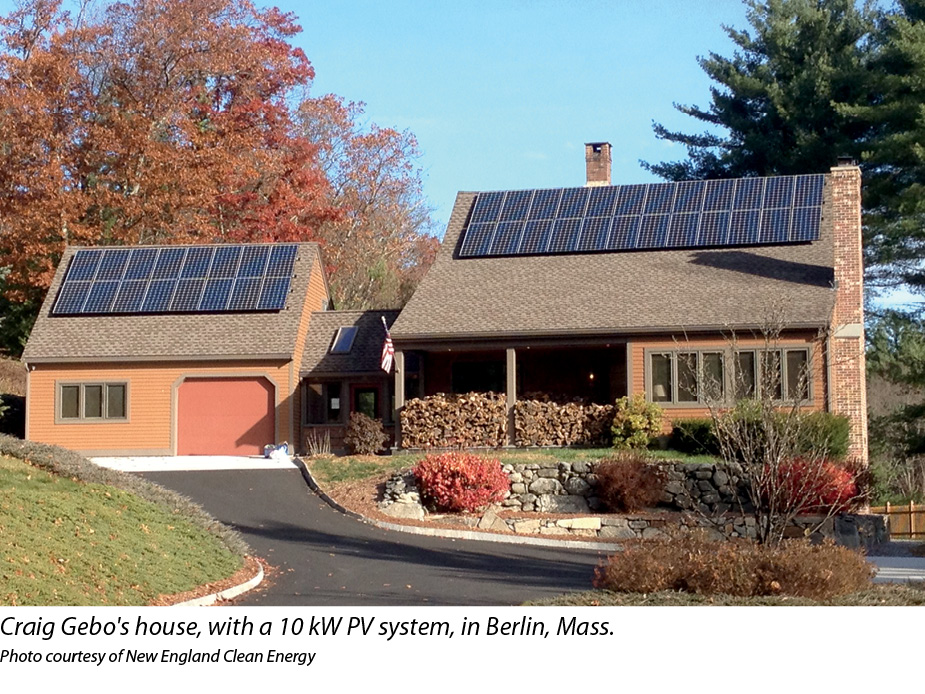
Reason 4 - Full net metering not available
On the flip side, less-than-generous net metering policies can push consumers toward larger systems. The municipal light department in Concord offers a form of net metering, but trues up monthly, writing checks for any excess production rather than carrying that excess over. The excess is paid at wholesale. This means, of course, that overages generated in the summer cannot offset under-production in the snowy Massachusetts winter.
For most New Englanders, that’s not a huge hardship because demand peaks in the summer when air-conditioning drives high electric bills. But for Eric Richard of Concord, things are a little different. His highest demand is in winter. (See Reason 5 to learn why.) In order to cover his energy needs across the year, he had to increase his system size.
The result is that in the summer, when energy demands are the highest, he will overproduce and get paid back at wholesale rates, but in the winter, he will under-produce and have to pay retail rates. While he will cover his kWh usage, he will wind up paying more than he gets back.
Reason 5 - Environmental commitment
Richard typifies a trend toward energy-efficient technologies that, ironically, are increasing electricity demand and contributing to larger PV system sizes.
When Richard and his wife built their house in 2012, they envisioned one day adding solar PV. “With that in mind, we installed a dual-source heating system, so we can switch between a traditional natural gas-fired furnace and a high-efficiency heat pump,” he says.
Not that long ago, using electricity to heat your home was the worst approach environmentally, given the high amount of fossil fuel required to create that electricity. Solar has turned that equation on its head.
Richard needs more power to heat his home with the heat pump, but when he uses solar to power his energy-efficient heat pump, it’s a win-win for the environment. That decision increased his solar PV system size from around 5 kW, which would have covered his basic electricity needs, to 10.05 kW, which will cover 90% of his electricity and heating needs.
Tom Sikina in Harvard also built an energy-efficient home, but unlike Richard, Sikina had his solar PV planned in the design phase, and so he had to estimate his electricity usage. In the end, his 10 kW system is producing far more than he needs, but he’s not bothered by that. He still benefits from SREC income and net metering on all of his production. And, as he says, “we were conservative in our estimates since we’d rather work from a surplus,” rather than add on later. Solar may be easy to install, but it still takes time.
As other installers have no doubt seen, solar PV drives energy conservation after the fact, as people reduce their consumption in a desire to zero out their electric bills. In addition, numerous of our customers have bought electric cars after going solar. Maybe they like the idea of making their vehicles truly “clean,” powered by renewable energy instead of fossil-fueled electricity.
But sometimes, as in Craig Gebo’s case (see Reason 3), it was also an opportunity to take advantage of the excess production from a large PV system. “When I realized how much power I could get from my roof, the electric car was an obvious way to take advantage of that,” he says. “In the first week, I got 250 miles to the gallon and charged it with solar power that is paying for itself.”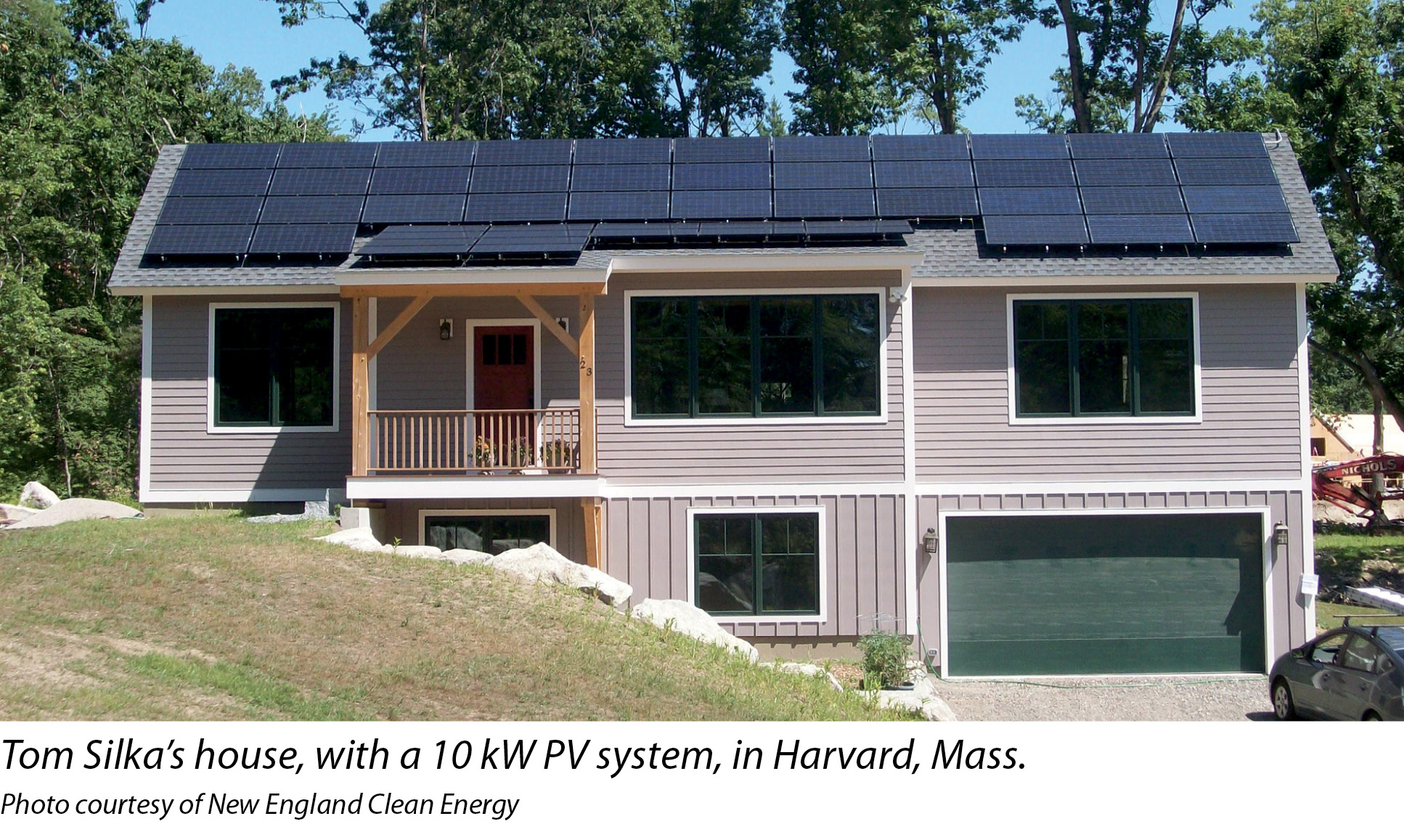
Reason 6 - Bigger homes, higher usage
It’s no secret that electricity usage continues to climb in this country, driven largely by technology but also by larger homes. Max Mazaev of Newton says, when asked why he installed an 8.28 kW system, “It’s not large if your house is large. I have a 10,000-square-foot home.”
The Grafton customer with the largest residential installation in central Massachusetts has a huge parcel of land with multiple buildings that will make good use of his 55 MWh of clean energy a year.
The carbon offset by his clean energy is equivalent to more than eight cars being taken off the road for a year. So whether or not you agree with increasingly large homes, we should be glad we have increasingly large solar installations to help power those homes. S
Market Report: Residential-Scale Solar Power
Policies And Economics Are Boosting Residential PV System Sizes
By Mark Durrenberger
Homeowners are finding many reasons to go big on solar, including government policies and personal finances.
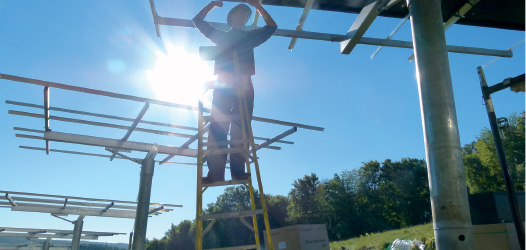

si body si body i si body bi si body b
si depbio
- si bullets
si sh
si subhead
pullquote
si first graph
si sh no rule
si last graph